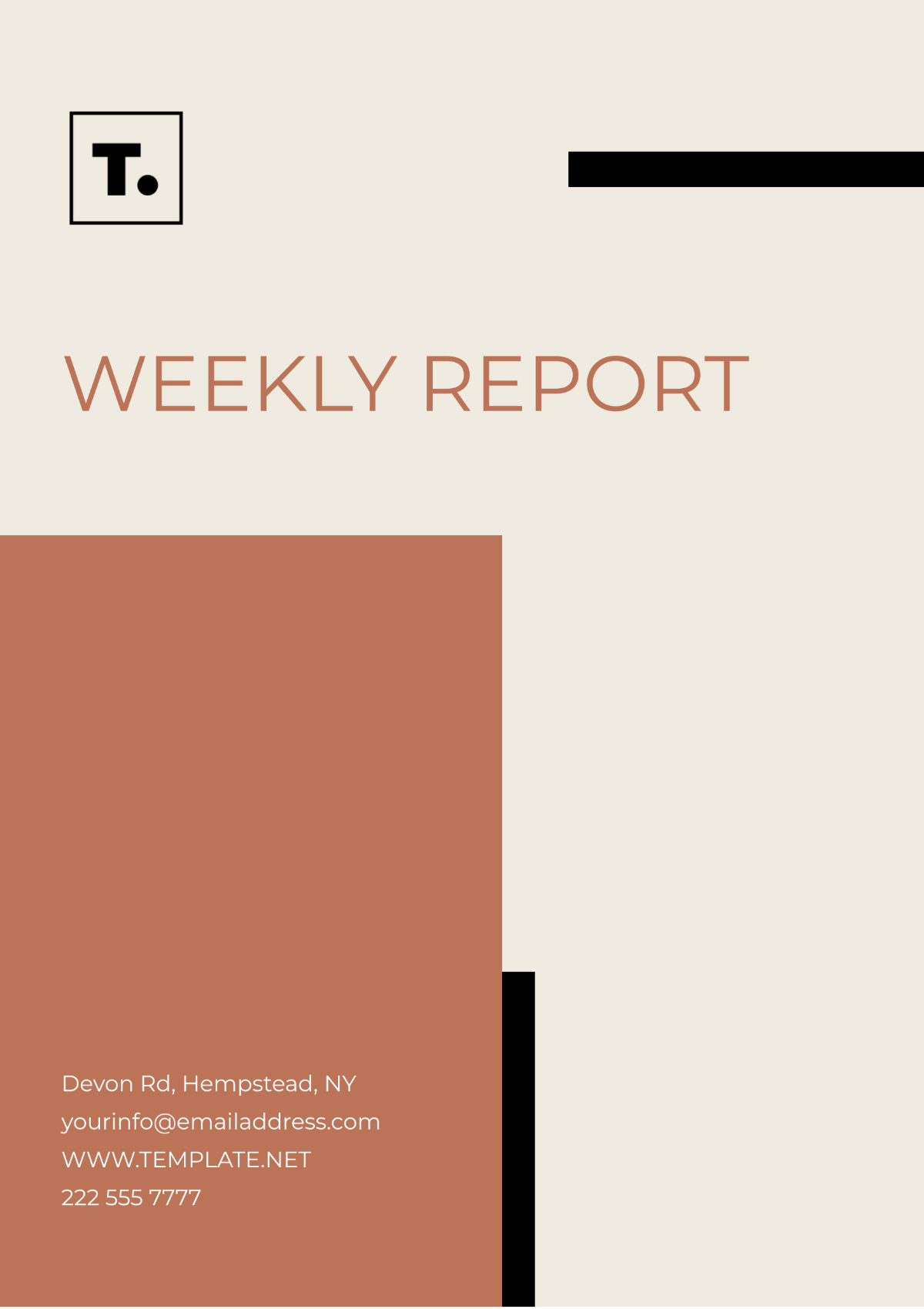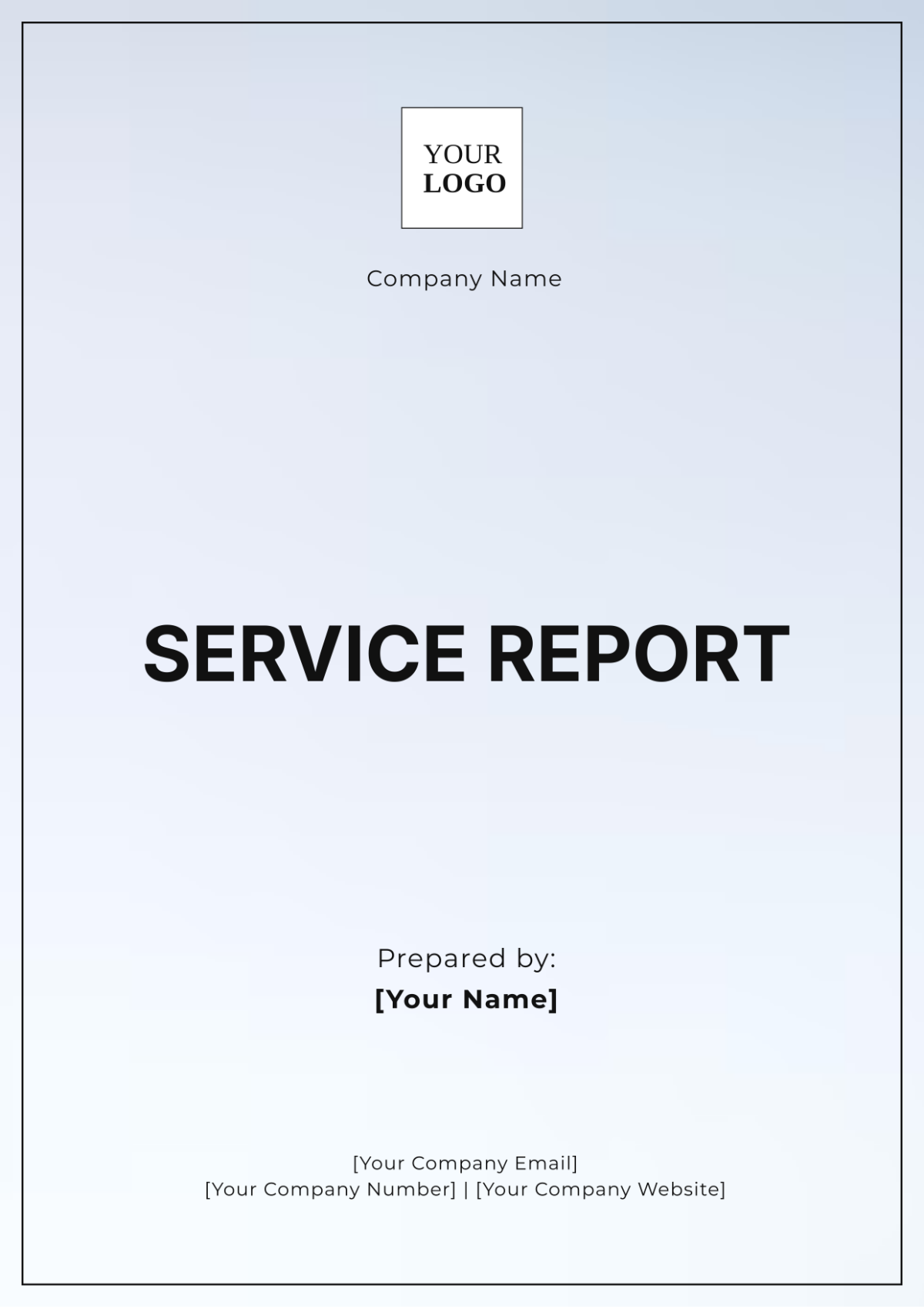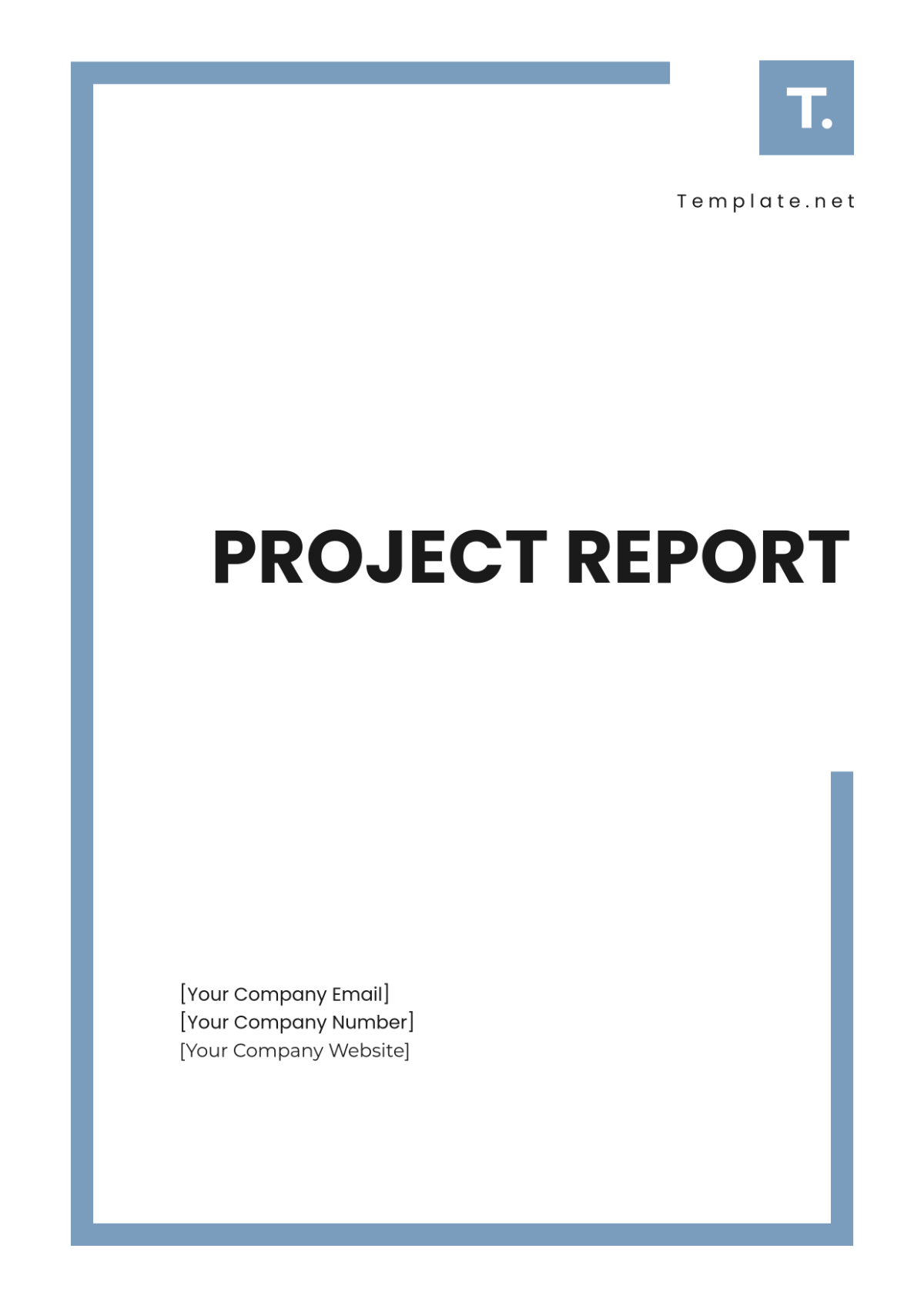Free Administration Annual Vendor Management Report

- 100% Customizable, free editor
- Access 1 Million+ Templates, photo’s & graphics
- Download or share as a template
- Click and replace photos, graphics, text, backgrounds
- Resize, crop, AI write & more
- Access advanced editor
Presenting the Administration Annual Vendor Management Report Template from Template.net. This editable and customizable template is designed to simplify your vendor management reporting. Fully editable in our AI Editor tool, it offers unparalleled convenience for creating comprehensive and insightful annual reviews. Optimize your vendor relationships with this essential reporting tool, exclusively available at Template.net.
You may also like
- Sales Report
- Daily Report
- Project Report
- Business Report
- Weekly Report
- Incident Report
- Annual Report
- Report Layout
- Report Design
- Progress Report
- Marketing Report
- Company Report
- Monthly Report
- Audit Report
- Status Report
- School Report
- Reports Hr
- Management Report
- Project Status Report
- Handover Report
- Health And Safety Report
- Restaurant Report
- Construction Report
- Research Report
- Evaluation Report
- Investigation Report
- Employee Report
- Advertising Report
- Weekly Status Report
- Project Management Report
- Finance Report
- Service Report
- Technical Report
- Meeting Report
- Quarterly Report
- Inspection Report
- Medical Report
- Test Report
- Summary Report
- Inventory Report
- Valuation Report
- Operations Report
- Payroll Report
- Training Report
- Job Report
- Case Report
- Performance Report
- Board Report
- Internal Audit Report
- Student Report
- Monthly Management Report
- Small Business Report
- Accident Report
- Call Center Report
- Activity Report
- IT and Software Report
- Internship Report
- Visit Report
- Product Report
- Book Report
- Property Report
- Recruitment Report
- University Report
- Event Report
- SEO Report
- Conference Report
- Narrative Report
- Nursing Home Report
- Preschool Report
- Call Report
- Customer Report
- Employee Incident Report
- Accomplishment Report
- Social Media Report
- Work From Home Report
- Security Report
- Damage Report
- Quality Report
- Internal Report
- Nurse Report
- Real Estate Report
- Hotel Report
- Equipment Report
- Credit Report
- Field Report
- Non Profit Report
- Maintenance Report
- News Report
- Survey Report
- Executive Report
- Law Firm Report
- Advertising Agency Report
- Interior Design Report
- Travel Agency Report
- Stock Report
- Salon Report
- Bug Report
- Workplace Report
- Action Report
- Investor Report
- Cleaning Services Report
- Consulting Report
- Freelancer Report
- Site Visit Report
- Trip Report
- Classroom Observation Report
- Vehicle Report
- Final Report
- Software Report
I. Executive Summary
This year, we set ambitious goals for our vendor management program, aiming to enhance the efficiency, cost-effectiveness, and quality of services provided by our vendor portfolio. Our objectives included improving vendor performance by 15%, achieving a 10% cost reduction across key contracts, and enhancing vendor compliance with our sustainability and ethical standards.
Throughout the reporting period, we meticulously tracked and evaluated the performance of our 120 active vendors, focusing on key metrics such as service quality, cost, adherence to timelines, and innovation contributions. The overall vendor performance improved by an average of 18%, exceeding our initial target. Cost savings realized through strategic negotiations and process optimizations amounted to $2.5 million, surpassing our goal by 20%. However, challenges in ensuring full compliance with sustainability standards among all vendors were noted.
Key findings from our analysis indicate a robust vendor management framework, with significant improvements in performance and cost management. Nonetheless, the need for stricter compliance mechanisms and enhanced vendor development programs was identified.
Based on these insights, our recommendations for the next fiscal year include implementing a comprehensive vendor compliance program, investing in vendor development initiatives focused on sustainability, and exploring opportunities for further cost optimization.
II. Introduction
A. Purpose of the Report
The purpose of this Administration Annual Vendor Management Report is to provide a comprehensive overview of our vendor management activities, assess the performance and value contribution of our vendors, and outline areas for improvement and strategic recommendations for the upcoming year. This report serves as a critical tool for informing strategic decisions and ensuring the alignment of vendor contributions with our organizational objectives.
B. Scope of Vendor Management Activities Covered
This report covers a wide range of vendor management activities conducted over the past fiscal year, including vendor selection, performance monitoring, compliance checks, risk management, and relationship management. It encompasses all active vendors, categorized into strategic partners, key suppliers, and other vendors, providing services across various functions such as IT, facilities management, and professional services.
C. Methodology Used for Data Collection and Analysis
Data collection for this report was conducted through a combination of quantitative and qualitative methods. Quantitative data were derived from our vendor management system, financial records, and performance monitoring tools. Qualitative insights were gathered through surveys, interviews, and feedback sessions with internal stakeholders and vendors. The analysis involved comparing performance against set benchmarks, identifying trends, and evaluating the impact of vendors on our organizational goals.
III. Vendor Portfolio Overview
In the past fiscal year, our focus has been on optimizing the vendor portfolio to align more closely with our strategic goals and efficiency targets. We have actively managed our relationships with 120 vendors, categorized based on the services provided and their criticality to our operations. Compared to the previous period, where we had 135 vendors, this represents an 11% reduction in our vendor base, reflecting our efforts to consolidate services and focus on high-performing vendors.
Category | Number of Active Vendors | Number in the Previous Period |
Strategic Partners | 20 | 25 |
Key Suppliers | 50 | 55 |
Other Vendors | 50 | 55 |
This strategic optimization has allowed us to enhance the quality of service and achieve greater cost efficiencies. Our total spending with vendors in the current period amounted to $50 million, compared to $55 million in the previous period, reflecting a 9% reduction in spending. This decrease is attributable to our successful negotiation strategies, the consolidation of our vendor base, and the discontinuation of underperforming vendors.
IV. Vendor Performance Evaluation
Our comprehensive performance evaluation process has been instrumental in identifying top-performing vendors and those requiring improvement or replacement. We evaluated each vendor against criteria crucial to our operational success, including quality of service, cost, adherence to timelines, and innovation.
Vendor | Quality of Service | Cost | Timeliness | Innovation |
Vendor A | Excellent | Good | Excellent | Satisfactory |
Vendor B | Good | Excellent | Good | Good |
Vendor C | Satisfactory | Satisfactory | Excellent | Excellent |
Vendor D | Excellent | Excellent | Good | Excellent |
Vendor E | Good | Good | Satisfactory | Good |
The evaluation reveals that Vendor D stands out as a high performer across most criteria, particularly in quality of service and innovation, contributing significantly to our operational efficiency and competitive advantage. Conversely, Vendor C, while excellent in timeliness, shows areas for improvement in quality and cost efficiency.
Our analysis underscores the importance of continuous performance monitoring and the need for targeted vendor development programs. It also highlights the value of innovation as a key differentiator in vendor performance, suggesting a potential area for further focus in our vendor management strategy. Moving forward, we will prioritize enhancing relationships with high-performing vendors and implementing improvement plans for those not meeting our standards.
V. Risk Management and Compliance
A. Risk Management Practices
In the past fiscal year, we have applied several key risk management practices to our vendor relationships, aimed at minimizing potential risks and ensuring operational continuity. These practices include:
Regular Risk Assessments: We conducted bi-annual risk assessments for each vendor to identify potential risks related to service delivery, data security, and compliance. This proactive approach allowed us to mitigate risks before they could impact our operations.
Vendor Audits: Selected vendors underwent audits to assess their adherence to our standards and contractual obligations. This helped ensure that vendors met our expectations for quality and security.
Performance-Based Risk Monitoring: We implemented a continuous monitoring system that tracks vendor performance indicators, flagging any deviations that could indicate emerging risks.
Diversification of Vendor Portfolio: By diversifying our vendor portfolio, we reduced dependency on single vendors for critical services, thereby spreading and mitigating risks.
Each of these practices played a crucial role in strengthening our risk management framework, contributing to a more resilient and secure supply chain.
B. Compliance Issues Encountered
Throughout the year, we encountered several compliance issues with our vendors, which were promptly addressed to maintain the integrity of our operations:
Data Security Breach: One vendor experienced a data security breach that potentially exposed sensitive information. We immediately activated our incident response plan, working closely with the vendor to mitigate the impact, and implemented additional security measures to prevent future occurrences.
Non-compliance with Sustainability Standards: A key supplier was found not to comply with our environmental sustainability standards. We conducted workshops and provided resources to help the vendor align with our sustainability criteria, monitoring progress until full compliance was achieved.
Delayed Deliveries: Multiple instances of delayed deliveries were noted with a logistics vendor, impacting our operations. We negotiated a revised service level agreement (SLA) with penalty clauses for delays and established a more robust monitoring system to track delivery timelines.
These issues underscored the importance of vigilant compliance monitoring and the need for effective mechanisms to quickly resolve non-compliance.
C. Vendor Risk Profile Changes
An assessment of vendor risk profiles over the period revealed significant changes, attributed to our risk management interventions and changes in vendor operations.
Vendor | Previous Year Risk Level | Current Year Risk Level |
Vendor A | Medium | Low |
Vendor B | High | Medium |
Vendor C | Low | Low |
Vendor D | Medium | High |
Vendor E | Low | Medium |
For example, Vendor A's risk level decreased from medium to low due to improvements in their data security practices and successful completion of our security audit. Conversely, Vendor D's risk level increased from medium to high due to emerging financial instability within the vendor's operations, highlighting an area for close monitoring in the upcoming period.
VII. Financial Analysis
A. Spending Trends
Over the past fiscal year, we have closely monitored our spending with vendors to identify trends and opportunities for further optimization. Our strategic efforts to consolidate vendors and renegotiate contracts have led to a noticeable shift in spending patterns, contributing to overall cost efficiencies.
Category | Previous Year Spending ($) | Current Year Spending ($) | Change (%) |
Strategic Partners | 25,000,000 | 22,500,000 | -10% |
Key Suppliers | 20,000,000 | 18,000,000 | -10% |
Other Vendors | 10,000,000 | 9,500,000 | -5% |
Total | 55,000,000 | 50,000,000 | -9% |
B. Cost Savings
The cost savings achieved through various initiatives, including vendor consolidation, renegotiation of contracts, and process improvements, are highlighted below. These savings underscore our commitment to financial stewardship and operational efficiency.
Initiative | Estimated Cost Savings ($) |
Vendor Consolidation | 1,500,000 |
Contract Renegotiation | 750,000 |
Process Improvements | 250,000 |
Total | 2,500,000 |
C. ROI Analysis
The return on investment (ROI) from our vendor management initiatives has been highly positive. By investing in strategic vendor management processes, including technology platforms for better vendor oversight and dedicated resources for vendor development, we have realized substantial returns. Specifically, for every dollar spent on vendor management improvements, we saw a return of approximately $4 in cost savings and efficiency gains.
This ROI underscores the effectiveness of our vendor management strategy, not only in achieving direct cost savings but also in enhancing operational efficiency and reducing risk. Our financial analysis confirms the strategic value of investing in vendor management and supports the continued allocation of resources to this area.
VIII. Recommendations
Based on the insights derived from our annual vendor management report, we propose the following strategic recommendations to further enhance our vendor management program:
Strengthen Compliance and Risk Management Efforts: Implement more rigorous compliance checks and risk assessments, especially for vendors in critical supply chains. Enhanced due diligence and continuous monitoring will mitigate potential risks and ensure all vendors adhere to our high standards of operation, thereby safeguarding our supply chain integrity and reputation.
Expand Vendor Development Programs: Invest in targeted development programs for vendors, focusing on sustainability, innovation, and efficiency improvements. By supporting our vendors in these areas, we can drive mutual growth, strengthen our partnerships, and ensure that our vendors are aligned with our strategic objectives and values.
Enhance Data Analytics Capabilities: Leverage advanced data analytics to gain deeper insights into vendor performance, spending trends, and market dynamics. This will enable more informed decision-making, identify additional cost-saving opportunities, and optimize our vendor portfolio for maximum efficiency and value creation.
IX. Conclusion
The Administration Annual Vendor Management Report has provided critical insights into the performance and management of our vendors over the past fiscal year. By highlighting key achievements, identifying areas for improvement, and outlining strategic recommendations, this report underscores the importance of effective vendor management in achieving our organizational goals. Moving forward, we are committed to implementing the recommended strategies to further strengthen our vendor relationships, enhance operational efficiency, and drive sustainable growth. Our focus on continuous improvement in vendor management will ensure that we remain competitive and continue to deliver value to our stakeholders.





























